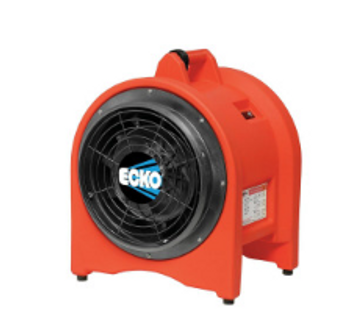What do I need for confined space entry & rescue?
Many jobs that involve confined spaces, even if you don’t use them every day, require a basic confined space kit in order to be OSHA compliant. A wide range of industries require work in confined spaces at least some of the time, and while this work is important it also has the potential to be very dangerous. Rescue plans must be put into place before anyone sets foot on the worksite, and they need to be thorough: workers need to know the dangers of the space through testing, research, and documentation, and they must be able to respond to them with proper training.
Part of confined space entry and rescue involves gear you don’t want to go without. After all, you can’t hold your breath in a toxic atmosphere, and a rope around your waist isn’t going to get you out of danger safely. Your confined space PPE should, at minimum, include equipment for three things: testing the air in the space you’re entering, bringing fresh air into the space, and equipment to help get workers in and out of what could be a dangerous situation.
Test the Air
You can’t see a lack of oxygen or high levels of toxic or flammable gases, so you need equipment to test for hazardous conditions. A 4-gas monitor with an internal pump will be able to pull an air sample from the space and alert workers to any hazards in the air (the four gases include hydrogen sulfide, oxygen, carbon monoxide, and lower explosive levels). Newer monitors have wireless alerts and can bring the entire safety team up to speed, even if they’re in a remote office, so action can be taken faster.
Bring Fresh Air In
Confined space ventilation equipment will let you replace the air in the environment with fresh air from outside of the space. Positive-pressure ventilation does this by pushing the toxic air out and bringing in clean air. Some spaces might be better served by a system that, rather than pushing air in, extracts fumes. Your confined space entry kit should include a blower or industrial fan that can fully replace the air in the space and ducting to help bring outside air in.
Get Workers Out
Workers need to be able to get out of a bad situation, whether that means removing themselves from the space or being removed by an attendant. Workers should have a rescue and evacuation plan, and be trained to recognize when a situation is dangerous to get themselves out in time. Outside attendants and technical rescue personnel should have the training and experience to assist and rescue workers, as leaving entry personnel on their own could be a recipe for disaster. Workers should be wearing a full-body harness attached to a winch with a steel cable (or a wristlet if the access point is extremely narrow) so they can get themselves out or be brought out. Rescue teams that need to enter the space should have a rescue and descent system containing a tripod, another overhead system, or a winch or other rope access system as appropriate to the circumstances.
PK Safety Confined Space Solutions
When you’ve been in the worksite safety business as long as we have, you learn about what works. PK Safety is proud of our decades of keeping our customers safe and well equipped for their work and play, whether they’re at heights, down in confined spaces, or somewhere in between. If you have questions about any of our products or worksite safety, reach out online or call 800.829.9580.
Recent Posts
-
Customizing Gas Detectors: Tailoring Solutions to Fit Your Unique Requirements
In today’s diverse industrial landscape, a one-size-fits-all approach to safety simply doesn’t cu …Jul 3rd 2024 -
10 Ways to Prevent Wildfires
You can prevent wildfires by extinguishing flames before you leave the worksite. Avoid practicing …Jul 1st 2024 -
ANSI/ISEA 138 Safety Gloves: Ensuring Hand Protection
The human hand is an anatomical masterpiece and arguably the greatest tool attached to our bodies …Jun 25th 2024





